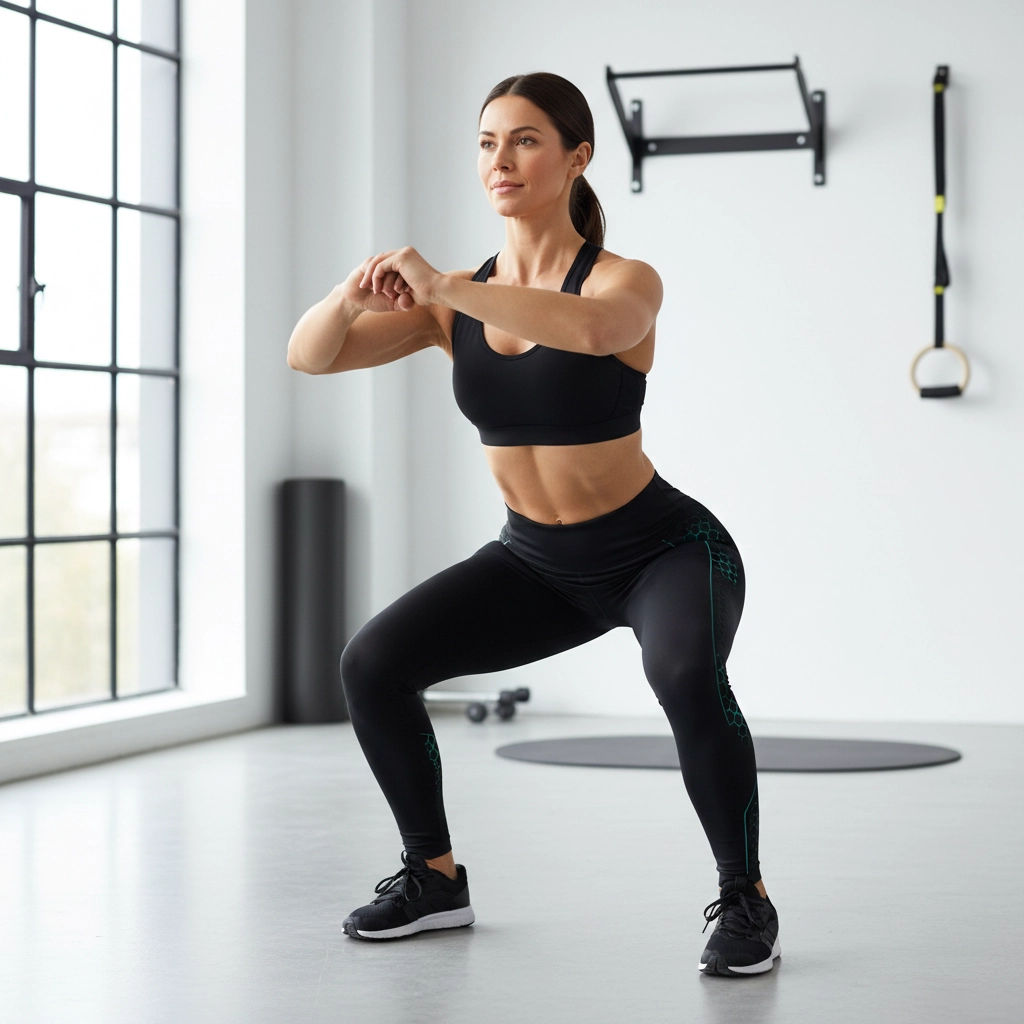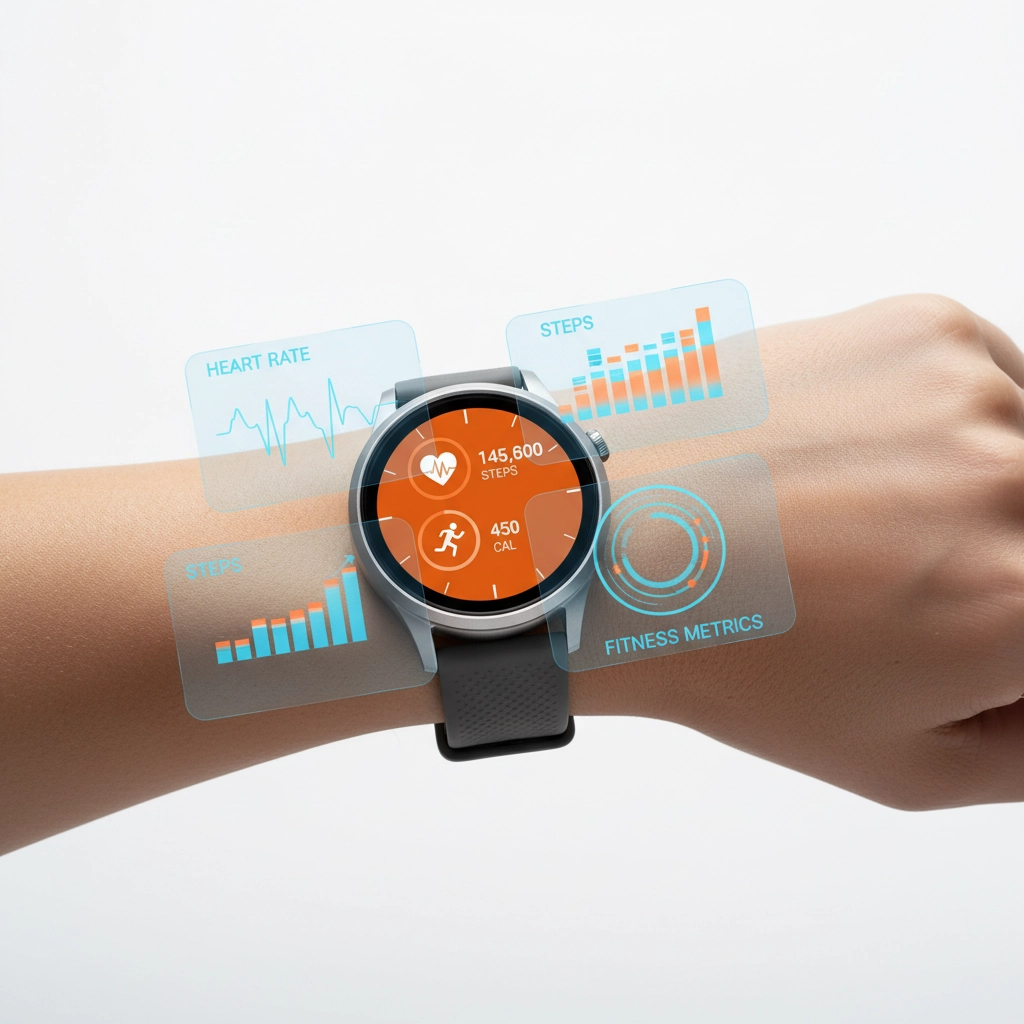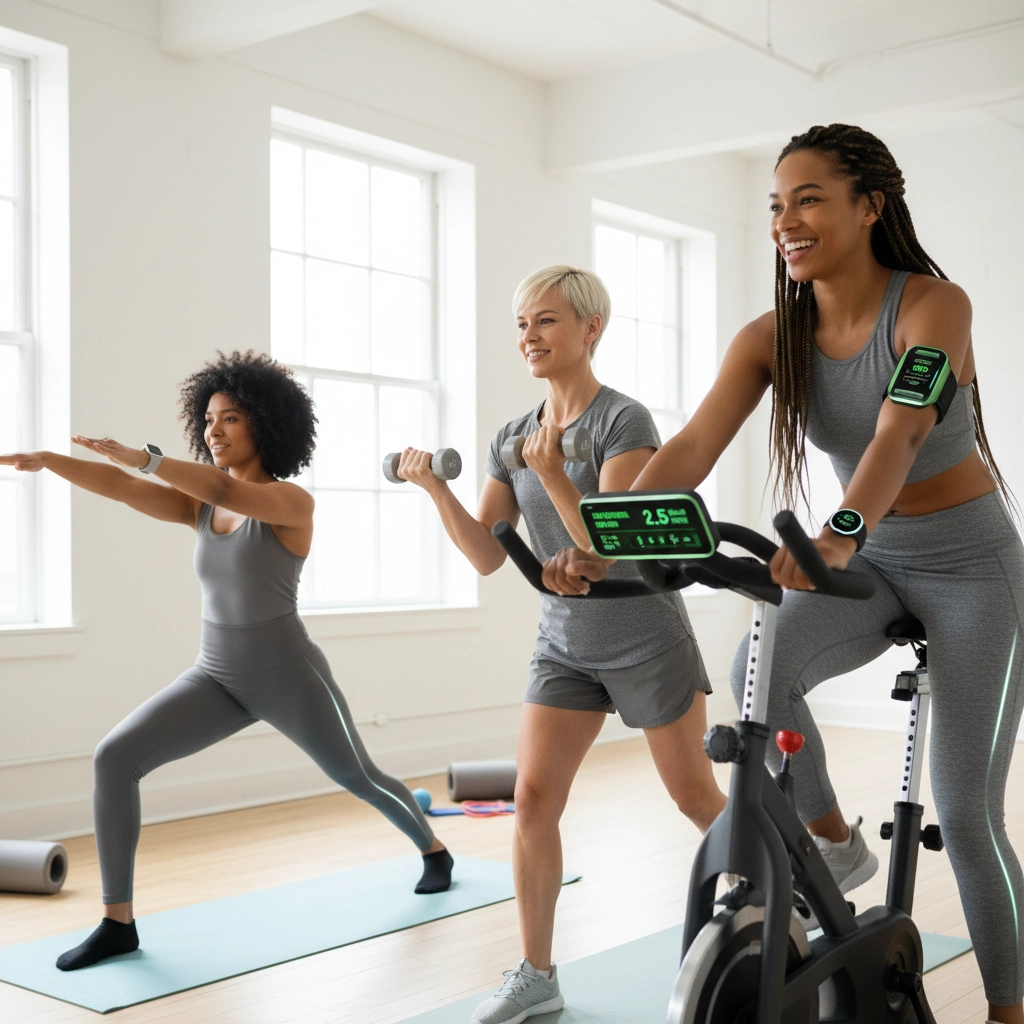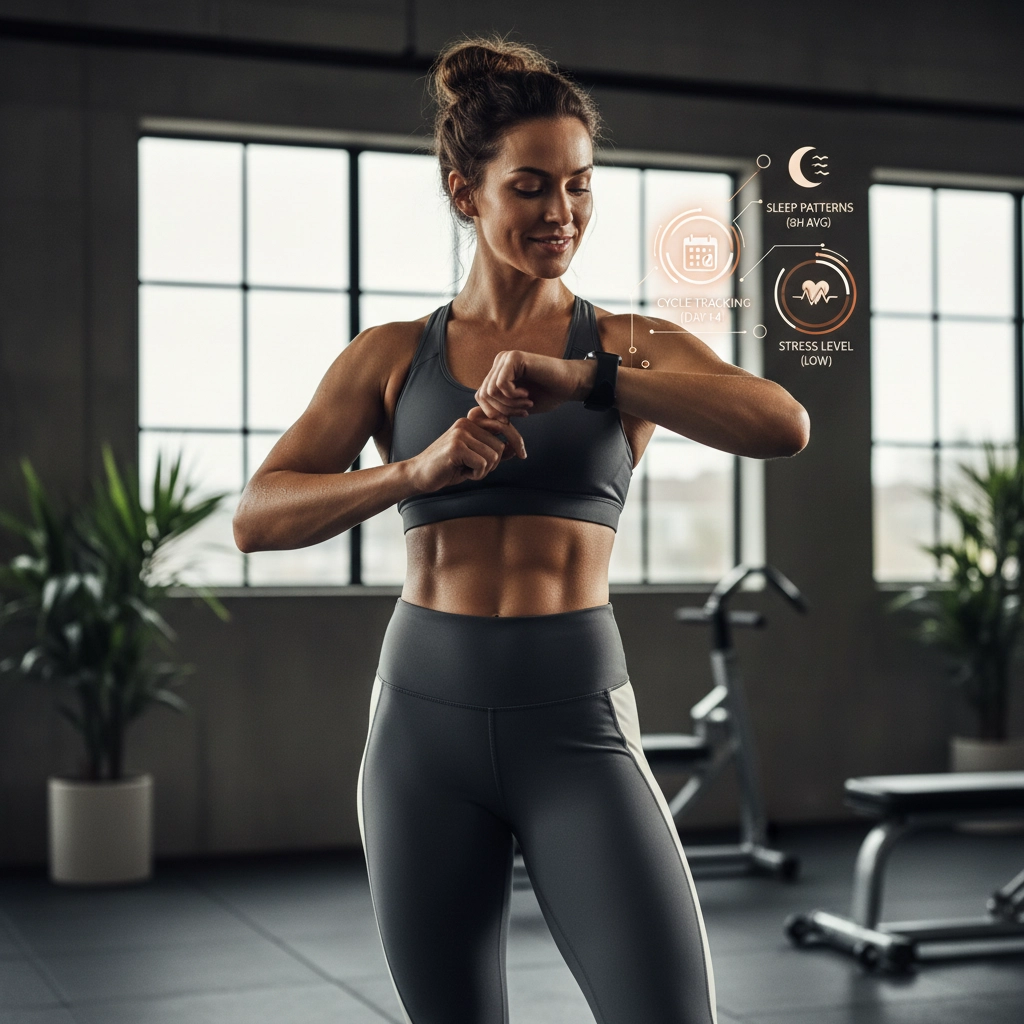Smart Fitness Apparel vs. Wearable Tech in 2025: The Hype, the Hazards, and What Really Works for Women

The fitness tech world is exploding in 2025, and if you're a woman trying to navigate this space, you've probably noticed two major players fighting for your attention: smart fitness apparel and traditional wearable tech. Both promise to revolutionize your workout, but which one actually delivers?
Here's the real deal: wearable technology just claimed the #1 fitness trend spot according to the American College of Sports Medicine, and the global market is racing toward $150 billion by 2025. But smart apparel is quietly making moves that could change everything.
Let's cut through the marketing hype and get to what actually matters for your fitness goals.
Why Smart Fitness Apparel Is Having Its Moment
Smart fitness apparel isn't just regular workout clothes with a fancy name, it's your gear working as hard as you are. We're talking about clothing and shoes with embedded sensors that track acceleration, speed, muscle strength, balance, stride, and gait patterns. The newest trend? Posture and form sensors that literally vibrate to correct your alignment mid-workout.

Think about it: no extra device to charge, no remembering to put on your tracker, no awkward wrist bump during yoga. Your sports bra or leggings are doing the work.
The Smart Apparel Advantage:
- Seamless integration, wear it and forget it
- Perfect for form-focused workouts like strength training or pilates
- Ideal for women dealing with "tech neck" from desk jobs
- No charging anxiety or dead battery disasters
- Natural fit for those who prefer minimal tech interference
The Reality Check: Smart apparel is still finding its footing. You're looking at higher costs, fewer options, and some serious questions about durability. How many times can you wash a $200 smart sports bra before the sensors give up? The jury's still out.
Wearable Tech: The Data Powerhouse That Won't Quit
Traditional wearables, smartwatches, fitness trackers, heart rate monitors, are the workhorses of fitness tech. They've mastered the art of comprehensive health monitoring, tracking everything from steps and heart rate to sleep patterns, stress scores, and yes, even your menstrual cycle.
The variety is incredible. Budget fitness bands start under $50, while premium smartwatches can run $400+. There's literally a device for every fitness level and budget.
Why Wearables Dominate:
- Real-time feedback during workouts for immediate performance adjustments
- Comprehensive health insights that smart apparel can't match
- Social features and challenges that tap into competitive motivation
- Established ecosystem with proven durability and support
- Women-specific features like cycle tracking and pregnancy monitoring

The Dark Side Nobody Talks About: Data privacy is a legitimate concern. Your wearable knows when you're stressed, when you sleep, where you go, and how fast your heart beats during intimate moments. That information is valuable: and not just to you.
The Privacy Problem You Need to Know About
Here's what fitness companies don't advertise: your wearable is a data goldmine, and you might not be in control of where that gold goes.
Common Privacy Mistakes Women Make:
- Accepting default privacy settings without reviewing data sharing permissions
- Not realizing that "anonymized" data can often be traced back to individuals
- Sharing workout routes that reveal home and work locations
- Ignoring third-party app permissions that access health data
- Not understanding what happens to data if the company gets sold
Check your data sharing settings here and take control of your information.
The good news? Smart apparel typically collects less personal data since it focuses on movement patterns rather than comprehensive health monitoring. But always read the fine print.
What Actually Works for Women in 2025?
Let's get specific about who should choose what:
Choose Smart Apparel If You:
- Prioritize proper form and posture correction
- Want minimal tech interference in your workouts
- Focus on strength training, yoga, or pilates
- Prefer not to wear devices on your wrist or arm
- Value privacy and limited data collection
Choose Wearable Tech If You:
- Want comprehensive health and fitness tracking
- Love data-driven insights and goal setting
- Enjoy social challenges and community features
- Need menstrual cycle or fertility tracking
- Want real-time coaching and performance feedback

The Hybrid Approach: Some women are combining both: using a basic fitness tracker for daily activity monitoring and smart apparel for specific workout sessions. It's not cheap, but it covers all the bases.
The Reality Check on Women's Wellness Tech
Are women's wellness wearables worth the investment? Here's what the experts won't tell you:
The Good:
- Cycle tracking has revolutionized how women understand their bodies
- Sleep monitoring reveals patterns that directly impact fitness performance
- Stress tracking helps identify triggers and patterns
- Heart rate variability monitoring provides insights into recovery needs
The Not-So-Good:
- Many "women-specific" features are basic repackaging of existing tech
- Pregnancy tracking features are often limited and not medical-grade
- Cycle predictions can be inaccurate, especially for women with irregular cycles
- Marketing often oversells capabilities while underselling privacy concerns

The truth? Basic fitness tracking provides 80% of the benefit at 20% of the cost. Premium features are nice-to-have, not need-to-have for most women starting their fitness journey.
Making the Smart Choice for Your Fitness Goals
Your decision shouldn't be based on hype: it should be based on your actual needs and lifestyle.
For the Form-Focused Athlete: Smart apparel wins. If you're serious about proper alignment in strength training or need posture correction from desk work, those vibration cues are game-changers. Explore our fitness apparel collection for performance gear that works with your body.
For the Data-Driven Competitor: Wearable tech is your best bet. The comprehensive tracking, social features, and real-time coaching provide motivation and insights that smart apparel can't match. Check out our wearable devices for options at every level.
For the Budget-Conscious Beginner: Start with a basic fitness tracker under $100. Get the core benefits without breaking the bank, then upgrade based on what you actually use.
For the Privacy-Conscious User: Smart apparel with limited connectivity or a basic tracker with strict privacy settings. You control the data, not the other way around.

The Bottom Line
Both smart fitness apparel and wearable tech have their place in 2025's fitness landscape. Smart apparel excels at seamless integration and form correction, while wearables dominate comprehensive health tracking and motivation features.
The key is matching the technology to your specific goals, not getting caught up in the latest trend. Whether you choose the embedded sensors of smart apparel or the data powerhouse of wearables, make sure you're making an informed decision about both the benefits and the privacy implications.
Ready to upgrade your fitness tech game? Explore our complete collection of wellness tools and find the perfect match for your workout style and goals.
Your fitness journey is unique( your tech should be too.)


